Featured image credit: Firefly
Launch Window | October 01, 2022 – 07:01-09:00 UTC | 00:01-02:00 PDT |
|---|---|
Mission Name | FLTA002 To The Black |
Launch Provider | Firefly Aerospace |
Customer | Firefly, NASA, Teachers in Space, Libre Space Foundation, AMSAT Spain, FOSSA Systems |
Rocket | Alpha |
Launch Location | SLC-2, Vandenberg Space Force Base, USA |
Payload mass | ~35 kg (~77 lb) |
Where are the satellites going? | To a 300 km low Earth orbit (LEO) at 137° inclination |
Will they be attempting to recover the first stage? | No, this is not a capability of Alpha |
Where will the first stage land? | It will splash down into the Pacific Ocean |
Will they be attempting to recover the fairings? | No, this is not a capability of Alpha |
Are these fairings new? | Yes |
Weather | The weather is currently 100% GO for launch |
This will be the: | – 2nd launch of Alpha – 2nd launch for Firefly – 1st launch of Firefly in 2022 – 11th launch from Vandenberg in 2022 – 126th orbital launch attempt of 2022 |
Where to watch | Join Tim Dodd, the Everyday Astronaut, as he and Firefly will go live with a hosted stream at approximately T-60 minutes with the official livestream; come ask questions and join the conversation live! |
What Does All This Mean?
Firefly Aerospace is the next private rocket company that aims to achieve orbit with its second launch attempt of their brand new Alpha launch vehicle. Alpha will lift off from Vandenberg Space Force Base, USA, and targets a 300 km low Earth orbit (LEO), in which it will deploy multiple payloads. On board of the FLTA002 To The Black mission will be multiple CubeSats and PicoSats, with most of them being copies of satellites that were lost during the failure of Firefly’s FLTA001 DREAM launch.

Firefly Aerospace
Firefly Aerospace Inc. (“Firefly”) is an American end-to-end space transportation company committed to providing economical and convenient access to space for small payloads through the design, manufacture, and operation of reliable launch and spacecraft vehicles. Firefly’s launch vehicles utilize common technologies, manufacturing infrastructure, and launch capabilities, providing LEO launch solutions for up to ten metric tons of payload in the future. Combined with Firefly’s in-space vehicles, such as the Space Utility Vehicle (SUV) and Blue Ghost Lunar Lander, Firefly provides the space industry with a single source for missions from LEO to the surface of the Moon or beyond. Firefly is headquartered in Cedar Park, TX.
FLTA002 To The Black
After Firefly’s first launch of Alpha, FLTA001 DREAM, failed shortly after lift off, many of the payloads lost will experience a revival and again fly on Alpha as part of the FLTA002 To The Black mission. A total of two CubeSats and five PicoSats will be hitching a ride to LEO this time.
FLTA002 To The Black Payloads
Teachers in Space – Serenity
In 2009, Teachers in Space was founded by the Space Frontier. The commercialization of space was beginning to gain more speed, so the Foundation wanted to find a way to put teachers on suborbital flights. By doing this, they would be able to return to their kids and give them first hand accounts of what an experience like this was like.
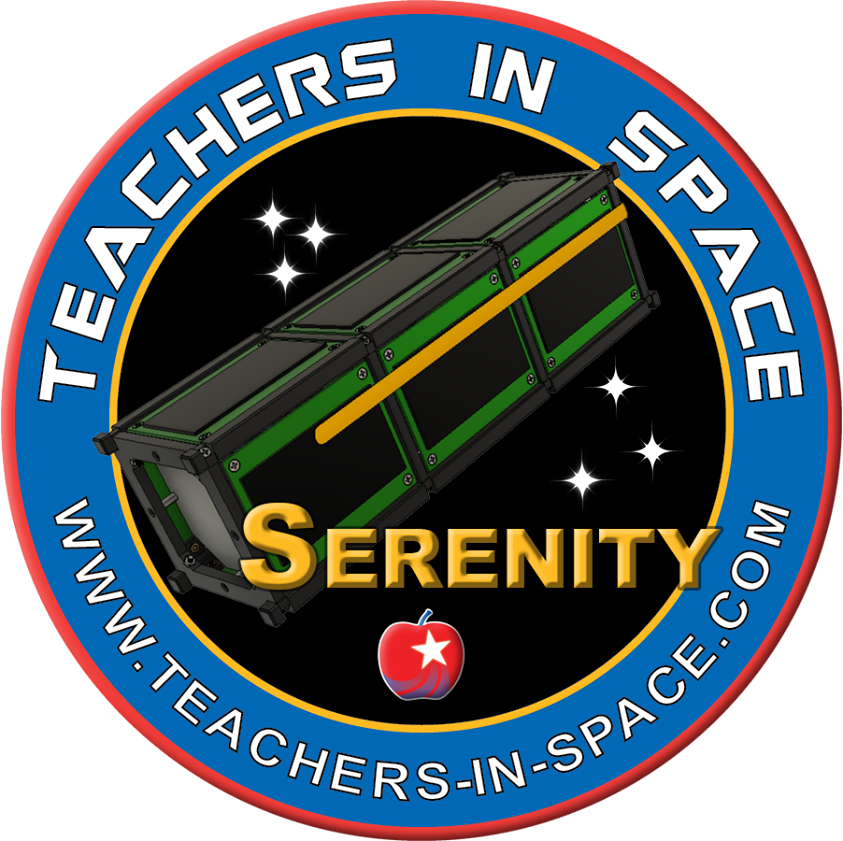
Originally, Teachers in Space were trying to get teachers to send in experiments to be tried on flights to space on various launch vehicles. In an interview with Everyday Astronaut, Elizabeth Kennick, President of Teachers in Space for over a decade, said, “We had only one person enter in our contest to send experiments to space”. Very little interest was able to be gained. That’s when Kennick turned to NASA, specifically the NASA Ames Research Center, which suggested trying balloon flights. “And they were absolutely right,” Kennick said.
Teachers in Space brought in a teacher from Columbus, Georgia, United States to help conduct the first balloon flight. This was a tremendous learning experience for them, which enabled them to do continuous balloon flights from then all the way to present day. The ultimate goal of Teachers in Space is to work to get teachers on a flight to space, but the steps taken here are necessary to achieve that goal.
Serenity
For this mission in particular, the Teachers in Space program will be sending a cubesat called Serenity on Firefly’s inaugural flight of their Alpha rocket. Serenity aims to provide educational resources to teachers and students around the world. After being placed in a low Earth orbit, Serenity will be activated and will start communications. It hosts a suite of data sensors and an Earth oriented camera. Anyone with a satellite receiver will be able to connect to Serenity. Teachers in Space suggest a local HAM radio club, which might have one. For more information, visit teachers-in-space.com.

As far as electronics on Serenity goes, Teachers in Space are using a simple Raspberry Pi, which anyone can buy and program themselves. The satellite is based on a 3U satellite bus and has radio transmission capabilities. Also on board are two Geiger counters, which measure and detect radioactive activity. These Geiger counters are identical with the exception of a fiber cloth to test its effectiveness as radiation shielding.
Another experiment is a blockchain experiment that will help to test the communications capabilities of the satellite with ground stations and with multiple satellites, once that becomes a possibility for Teacher in Space. Other typical instruments include GPS, a spectrometer, and a pressure sensor. All of these are simply on the satellite to see what data they can gather.
Furthermore, there is a camera mounted on Serenity, which will be fixed on Earth via a gyro control system. With a resolution of 126 meters per pixel, the camera will be able to produce images for Teachers in Space and others who want them. These images will not have a very high resolution, but will be a great first opportunity to see Earth from space. Anyone who is interested can request a place on Earth for a photo to be taken through the form on teachers-in-space.com.
NASA – TechEdSat-15
NASA’s TechEdSat program, supported by NASA’s Ames Research Center in California, aims to help college and university students gather experience in building and operating satellites. In this program, NASA researchers mentor students to evaluate new technologies for use in small satellites.
The TechEdSat series focuses on bringing small payloads back to Earth from LEO, advancing EDL (entry, descent, and landing) systems. This will allow more researchers to access cost-effective flight opportunities to test new technologies.
So far, each TechEdSat intentionally burnt up during reentry to verify that the spacecrafts work and are safe. Eventually, the program aims to successfully reenter and recover a CubeSat from a defined landing spot back on Earth.

TES-15 is a 3 U CubeSat weighing 4.15 kg hitching a ride on Firefly’s FLTA002 To The Black mission. The satellite is a cooperation between NASA and San Jose State University, and is equipped with a deployable exo-brake, an exo-atmospheric breaking device.
The spacecraft will deploy its exo-brake after being ejected from the dispenser to de-orbit itself precisely through drag-modulation and deeper penetration into Earth’s atmosphere. Furthermore, teams hope to validate its communications system for future EDL system flights. The Beacon And Memory Board Interface, or BAMBI, is another experiment located on TES-15 and aims to optimize internal and external data transfer from the CubeSat.

Libre Space Foundation – PicoBus – Qubik-3/-4
Libre Space Foundation is a Greek non-profit organization based in Athens, Greece focused on developing open source technologies for space, including the relatively new field of PocketQubes. PocketQubes, compared to CubeSats, are even smaller satellites where 1P satellites have a form factor of 5 cm x 5 cm x 5 cm and a maximum weight of 250 g. Their current solutions in the field of PocketQubes include among other things deployment, identification, tracking, and communication.
PicoBus is Libre Space’s open source PocketQube dispenser that can deploy up to eight PocketQubes. On this mission their dispenser will deploy a total of six PocketQubes, with two, Qubik-3 and Qubik-4, being their own test satellites. Both satellites are 1P PocketQubes with a mass of less than 250 g each. Qubik-3 and Qubik-4 have a lifespan of approximately three weeks on orbit.
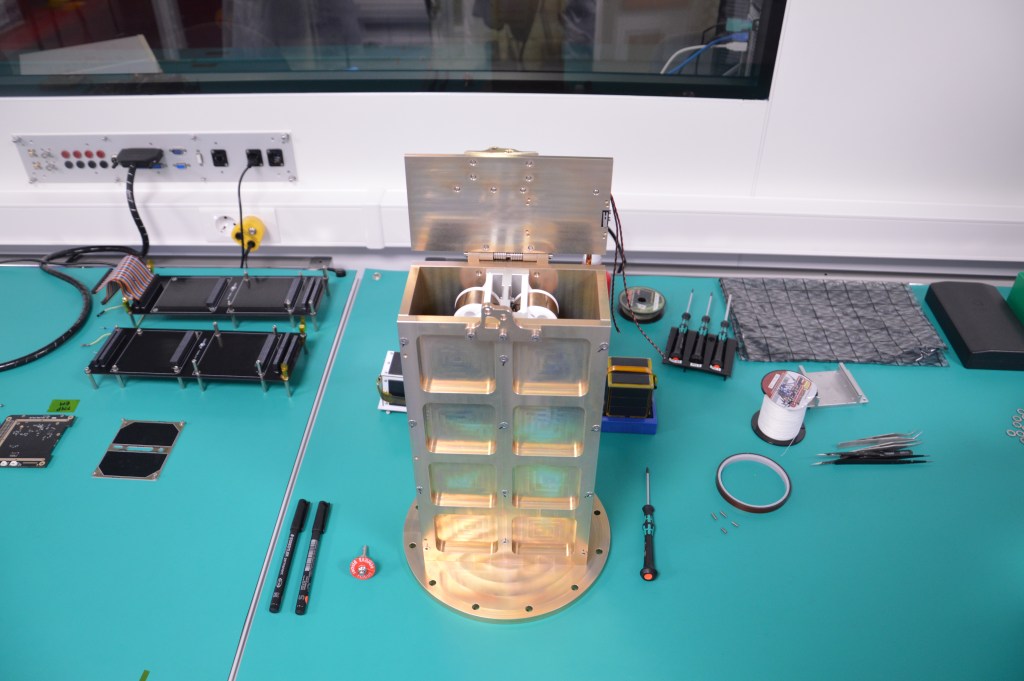
During this mission, the organization will focus on the Launch and Early Operations Phase (LEOP), in which they will conduct their radio amateur experiments with their two test satellites. The LEOP is extremely crucial for most operations as operators often need to identify their satellites to establish communication and start operation. While this can be relatively easy for dedicated missions or bigger satellites, it is way more complex for CubeSats and PocketQubes as they are often released in very close proximity to other satellites of those types. Furthermore, the often limited lifespan of those satellites makes it even more important to establish communications.
Qubik-3 and Qubik-4 will focus on exactly that problem and will conduct amateur radio communications, orbit determination, and satellite identification experiments by exploiting Doppler variations in collaboration with the ground segment of the mission. The ground segment will receive data from the satellites with the help of the open source global network of satellite ground-stations called SatNOGS. Libre Space has developed a telecommunications solution called SatNOGS COMMS that is suitable for most small satellites and featuring tight integration with the SatNOGS network.

Everything developed at Libre Space Foundation is open-source and can be found and accessed on their GitLab page. In that spirit, the organization plans on sharing all their scientific findings of their mission and has attached The Libre Space Manifesto that can be seen underneath on both satellites.
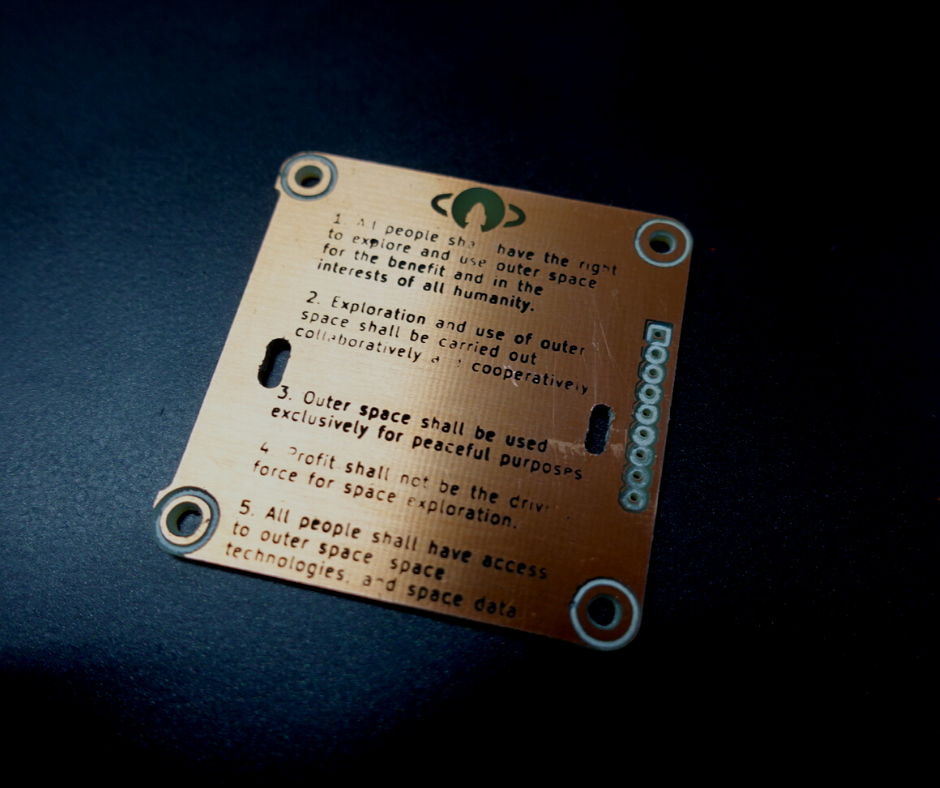
The three other satellites flying inside and being deployed by PicoBus are Fossa Systems’ 1P FossaSat-1b, and AMSAT-EA’s 1.5P GENESIS-G and GENESIS-J. Their final testing and integration took place in October 2020 and was live-streamed by Libre Space on their YouTube channel.
AMSAT-EA – GENESIS-G/ASTROLAND-1 & GENESIS-J/ASTROLAND-2
AMSAT-EA is a Spanish non-profit radio-amateur organization founded in 2017 with the goal of enabling radio-amateurs to exchange digital messages over vast distances. AMSAT-EA has built two 1.5P (7.5 cm x 5 cm x 5 cm) PockeQubes called GENESIS-G and GENESIS-J, also called ASTROLAND-1 and ASTROLAND-2. Students from the European University of Madrid and from the Higher Technical School of Engineering (ICAI) in Madrid have helped with mechanical, attitude and thermal design, and with parts of the communications system respectively. GENESIS-G and GENESIS-J are slightly upgraded versions of GENESIS-L and GENESIS-N that were lost during Firefly’s first launch of Alpha.

The satellites are entirely made from COTS (commercial-off-the-shelf) parts and feature a 2 MHz CPU that will act as a low speed digital regenerative repeater to allow Morse code retransmissions between distant users. Furthermore, the satellites will emit beacons with several types of telemetry and 20 different Morse code messages with greetings in Spanish and English.
GENESIS-G and GENESIS-J will both sport an ionic liquid electrospray thruster manufactured by ienai SPACE. Ienai SPACE is a Spanish company working on electrical micropropulsion for small satellites to enable longer duration missions.
FOSSA Systems – FossaSat-1b
FOSSA Systems is a company based in Spain creating so called PocketQubes (1P PocketQube is defined as 5 cm x 5 cm x 5 cm) for Internet of Things (IoT) and Earth observation (EO) use. On this mission, FOSSA Systems flies its 1P FossaSat-1b together with Libre Space Foundation. The satellite will be deployed by Libre Space’s PicoBus dispenser.
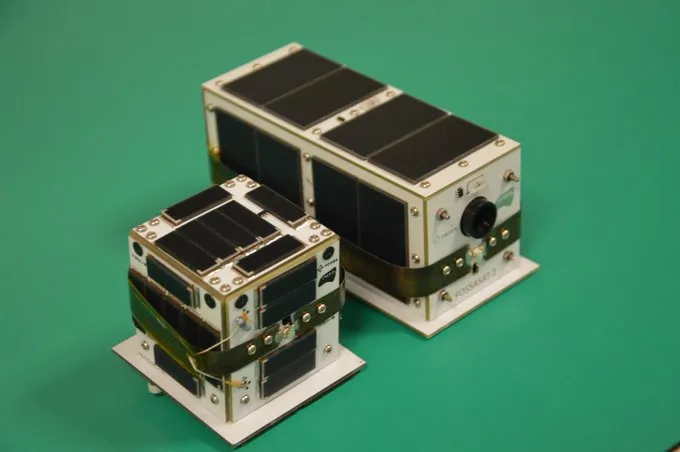
FossaSat-1b
FossaSat-1b is an upgraded version of the company’s first launched PocketQube called FossaSat-1. FossaSat-1 was successfully launched on Rocket Lab’s 10th mission Running Out Of Fingers and became the first PocketQube launched by Spain. Compared to FossaSat-1, FossaSat-1b doesn’t feature deployable solar panels, but overall upgraded systems.
Firefly Capsule Filled With Artwork
On board are not only satellites, but also a capsule filled with artwork provided by Teachers In Space, the Girl Scouts of Austin, and Jonna Ocampo. Teachers In Space will send 128 postcards to orbit made by students from all around the US. The Girl Scouts of Austin have provided a space artwork that will hitch a ride to space as well. The mission of these non-technical payloads is to raise awareness and space enthusiasm for children by flying their artwork to orbit.
Author Jonna Ocampo, who runs the self-funded non-profit organization CD-SEAS, has written a children’s book titled Henry the Astronaut, which she has chosen to launch into orbit yet again after a copy has already been on the inaugural launch of Firefly’s Alpha rocket last year. One of Jonna’s main goals is to provide an easy to learn source for children so that they can increase their knowledge of space at an early age.
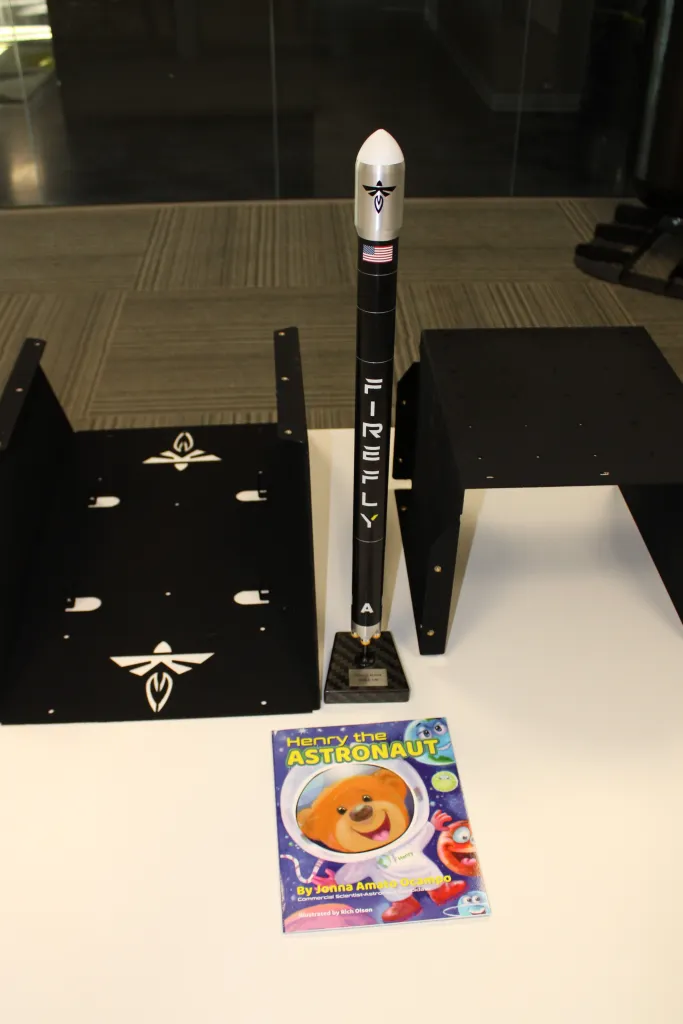
Better yet, these children will be reading a book that also went to space. Jonna said in an email to Everyday Astronaut, “…while this book will not return to Earth, readers will know that it has touched space and will remain amongst the stars forever”.
FLTA002 Mission Profile
Launch day begins with final pad checkouts eight hours prior to launch. For the next two hours, Firefly powers up Alpha and does sensor checks before beginning to load helium, RP-1, and LOx at T-06:00:00, at T-05:15:00, and at T-03:40:00 respectively. Alpha enters terminal count 20 minutes before lift off and ignites its first stage engines about two seconds before the hold-down clamps release the rocket into the sky.
Shortly after lift off, Alpha will fly south-west heading at a 137° inclination. About a minute after launch the vehicle is supersonic breaking the sound barrier, and experiences MaxQ only seconds later at T+00:01:13. MaxQ stands for maximum aerodynamic pressure and signifies the point in the vehicles’ trajectory, in which the combination of the density of Earth’s atmosphere and the vehicle’s speed create the most stress on the vehicles’ structure.
Stage 1 and stage 2 will separate at T+02:40 after the four Reaver engines on Alpha’s first stage have depleted all the propellant. The second stage engine will ignite shortly after the two stages have separated. Next up is fairing jettison, which occurs at T+00:03:25.
The second stage burns for approximately five minutes after which it will shut down and coast up to apogee where it will perform a circularization burn demonstrating on orbit relighting capability of their second stage engine Lightning. After Alpha’s second stage has entered a circular orbit it will beginn to deploy the spacecrafts on board. After the last of the eight satellites have been deployed, Alpha’s second stage will enter its passivation phase and the mission will conclude.
FLTA002 Mission Timeline
| HH:MM:SS From Lift Off | Events |
|---|---|
| T-08:00:00 | Final Pad Checkouts |
| T-07:00:00 | Power Up of Alpha |
| T-06:50:00 | Sensor Checks |
| T-06:00:00 | Helium Load Begins |
| T-05:15:00 | Fuel Load Begins |
| T-04:30:00 | Pad Clear |
| T-03:40:00 | LOx Load Begins |
| T-00:20:00 | Terminal Count |
| T-00:00:01.79 | Ignition of Stage 1 |
| T+-00:00:00 | Lift Off! |
| T+00:01:13 | Maximum Aerodynamic Pressure (MaxQ) |
| T+00:02:37 | Main Engine Cut Off (MECO) |
| T+00:02:40 | Stage Separation |
| T+00:02:42 | Stage 2 Ignition |
| T+00:03:25 | Fairing Jettison |
| T+00:07:40 | Second Engine Cut Off #1 (SECO 1) |
| T+00:53:37 | Stage 2 Ignition #2 |
| T+00:53:39 | SECO 2 |
| T+00:59:57 | Serenity Deploy |
| T+01:00:57 | TES-15 Deploy |
| T+01:01:57 | PICOBUS Deploy |
Alpha
Alpha is a small lift launch vehicle developed and built by Firefly Aerospace. With a payload capacity of 1,170 kg and 745 kg to a 200 km LEO at 28.5° inclination and a 500 km SSO, respectively, Alpha is one of the biggest small lift launch vehicles. It is a two stage liquid-fueled Rocket utilizing highly refined kerosene (RP-1) and liquid oxygen (LOx) as fuel and oxidizer. Alpha stands a total of 29.48 m (~96.7 ft) tall while being 1.8 m (~71 in) in diameter with a 2.21 m (~87 in) fairing. The rocket is entirely made from advanced carbon-fiber composite, which results in a lighter, but still strong vehicle, able to lift more payload than comparable rockets made from metal.
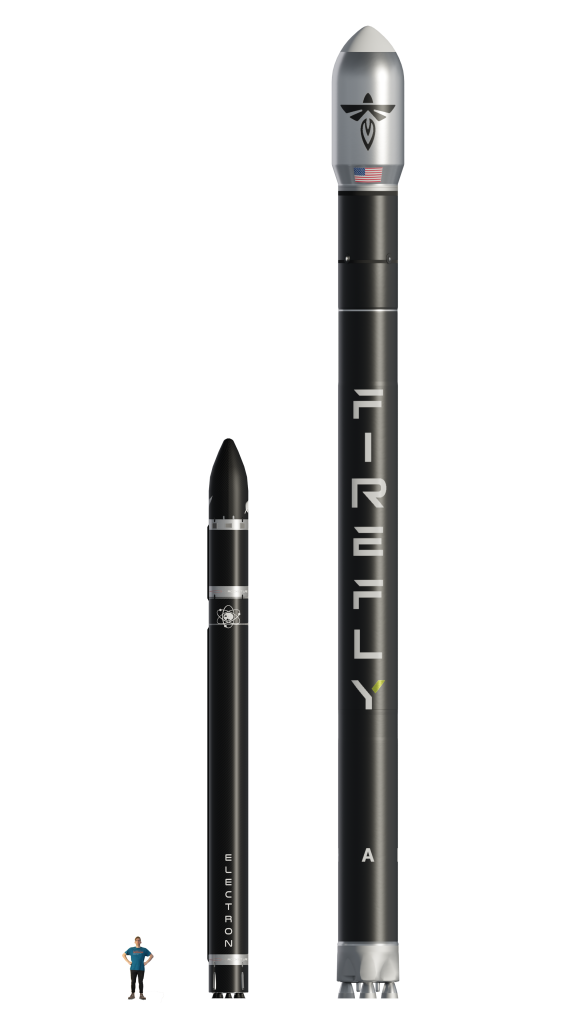
Stage 1
Alpha’s first stage is powered by four Reaver 1 engines producing a total of 736.1 kN (~165,000 lbf) at lift off. The Reaver 1 engine is a “simple” combustion tap-off cycle engine where hot exhaust gasses are driving a single-shaft turbo pump, which feeds the engine with propellants. This makes the engine relatively simple, but also complicated to start. During this complicated start up procedure, Firefly uses TEA-TEB as an ignition fluid, which causes the green flame at start-up. This will be the first time that a tap-off cycle engine will fly on an orbital class rocket. Up until now there has only been Blue Origin’s BE-3 engine as another tap-off cycle engine that has been flown on a vehicle.
Each Reaver engine produces ~184 kN of thrust at a specific impulse (ISP) of 295.6 seconds at lift off. The maximum total thrust of the rocket is 801kN (~180,000 lbf) in a vacuum. Furthermore, each engine features single axis gimballing resulting in pitch, yaw and roll control when all four engines are combined.

Stage 2
The second stage is powered by a single Lightning 1 engine producing 70.1 kN at an ISP of 322 seconds. Furthermore, the engine’s nozzle extension gets cooled by the exhaust gas of the turbopump. Just like Reaver, Lightning is also a tap-off cycle engine and uses the same TEA-TEB as its ignition fluid.
FLTA001 DREAM Failure
Shortly after successful ignition of all four Reaver engines and a nominal lift off of Alpha, the rocket experienced a premature engine shut down of its engine two on the first stage at approximately T+14s. This was caused by a main fuel valve that closed off the fuel supply to the engine. The valve closed due to a loss of electrical signal caused by a faulty connector.
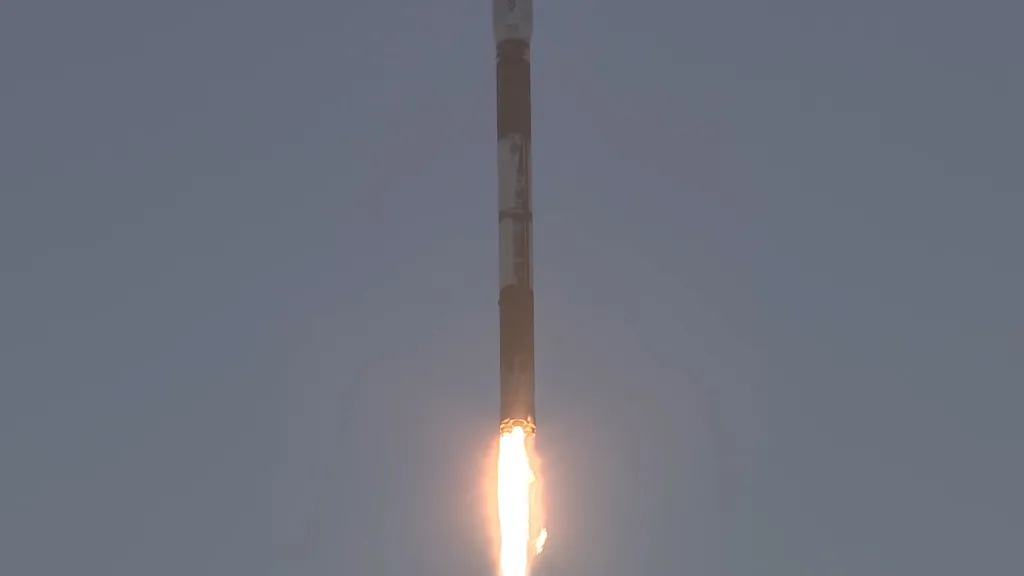
The under-powered vehicle continued to ascend accelerating gradually. At approximately T+2:16 the vehicle reached supersonic speeds. Due to the lack of control authority caused by the early engine two shut down, and the aerodynamics drastically changing in the trans-sonic environment, the vehicle tumbled out of control. The range transmitted a termination signal at T+2:27 after the rocket completed a total of one and a half somersaults.
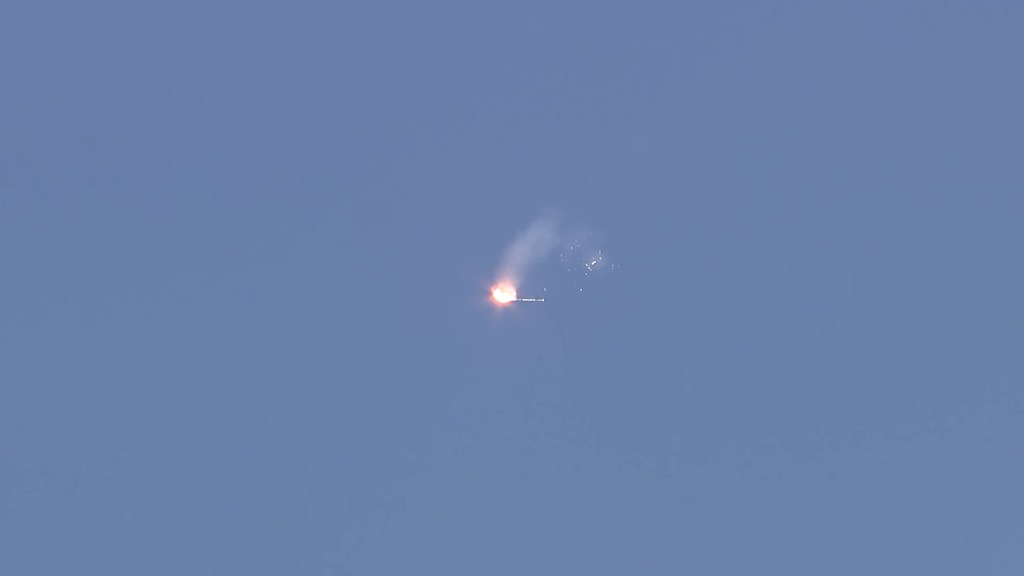
The engine section of the rocket plunged back to the ground and survived the impact in relatively good condition, allowing the teams to gather the remains and analyze the experienced anomaly. Firefly’s Alpha rocket gathered around two and a half minutes of valuable flight data that helped the teams to further improve the vehicle’s design with the aim of reaching orbit with FLTA002 To The Black. Alpha reached an altitude of approximately 15 km when the flight was terminated.




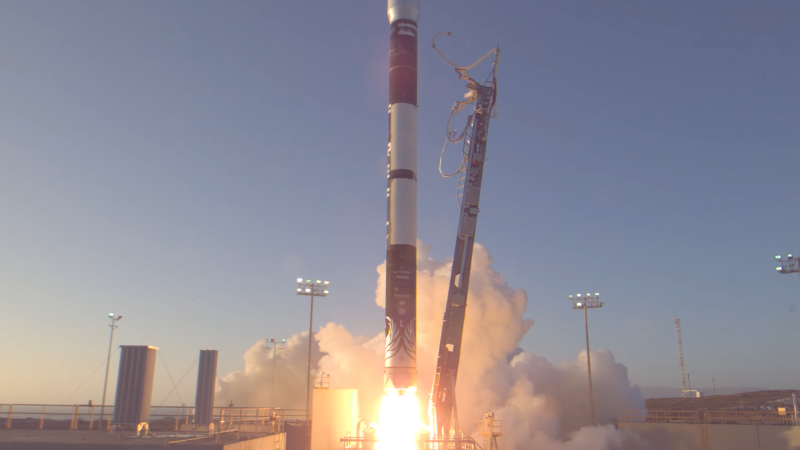
Hello Florian! I’m really excited about this Mission!
Just one think, the Spanish AMSAT-EA will launch the GENESIS-G/ASTROLAND-1 y GENESIS-J/ASTROLAND-2; L/N was the lost one of first Alpha mission of FireFly
Thanks! It’s been updated.
Hello i see on firefly that lift off in September 19, at 12.00 AM PST https://firefly.com/alpha-flight-2-to-the-black/
Great summary, graphics, etc. You get a gold star!!
Firefly (great TV series, not great spacecraft company) gets yet another D. Why not F? Well for one thing they are one launch ahead of ULA, SLS, and other wannabes. Their “Reaver” (OK, I am a fan of the TV series but you don’t resonate “serious” by naming things after a 1/2 yr 14 episode show…) engines lit up, which is more than Bezos Blue Penis BE-4s do. (Yes, I know, it’s important to play Space Cowboy with The Hat™ and beat Sir Branson to the Karman Line and call it “space.” Good thing NASA stepped up to say “you’re a tourist, not an astronaut.”)
Back to Alpha, Firefly, To the Black, and … yet again… failure. as many giants on whose shoulders I stand have said, “Space is Hard.” Fleecing investors seems to be a bit blockchain space reusable EV sustainable crypto cyber easier if you just have buzzwords. Firefly only has one.
Perhaps if they add “crypto”, “blockchain”, and “cyber” they’d fleece more investors, but in the process get sufficient funds to launch a non-exploding LEO delivery vehicle. Cyber Fiber. Crypto Synchro.
Best wishes from sunny Tucson, Arizona. It’s a lot like Vandenberg but without the spacey loser spewing investor talk. Oh shoot, we have those crazy space-balloon idiots here. Well other than them we’re pretty golden.
Shout out to Tim. My household has supported you since before you got the van.
Shout out to Jeff. When you compete, try not to screw over your partners to do so.
Shout out to Elon. J/K. he doesn’t read this forum anymore.
Shout out to Firefly. Joke’s over. Time to launch or stop shilling for cash.
And to Rich and Mary at Vandenberg… why are you giving these people free reign on your “space force” base? You’re supposed to be military and understand PHYSEC and OPSEC. Where did that break your brain?
NSA – No thanks.
FBI – See SAIC J. Edwards (TUS) or ex-SAIC P. Cullen (PHX) who will explain to you how to reach me in a way that doesn’t make you look stupid. 0500 raids on my front door are part of the latter.
Ehud Gavron
Tucson AZ
All space fans welcome, email first. LEOs (not low earth orbit) – talk to my lawyer.
Hello,
We are big fan of your work. We were here at Hawk-nest viewing last night hoping to see the launch, and will be back there again tonight. We took our son to go see and this is our entire family first time experience and hoping to witness something incredible. We are continue to tune in your YouTube channel and hope to be able to meet you here as well! Thank you for your hard work!